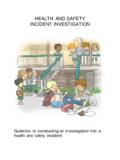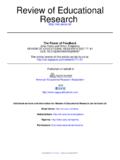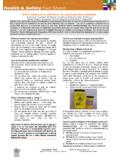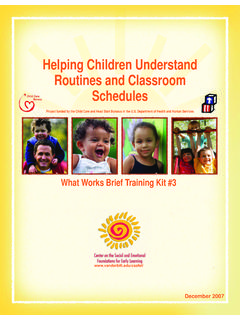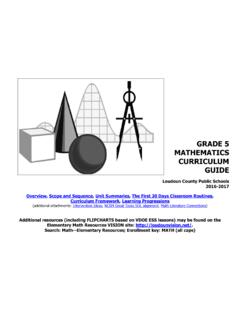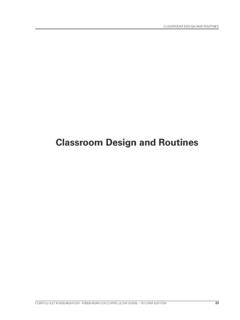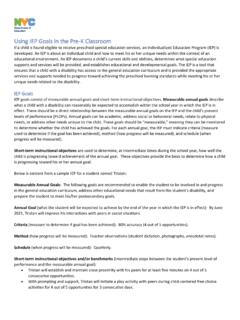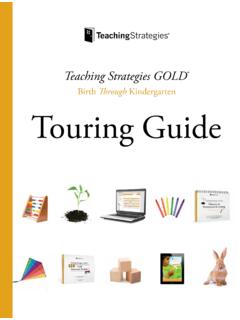Transcription of Wellbeing activities booklet - Education
1 State of Queensland (Department of Education ) 2020, as per activities for Students Department of Education State of Queensland (Department of Education ) 2020, as per 2 Mindfulness activities 4 Guided Imagery 20 Gratitude 23 Physical activities 26 Young person self-care activities 36 Suggested Weekly Wellbeing Routine 37 References 381 Department of
2 Education State of Queensland (Department of Education ) 2020, as per wellbeingSupporting the Wellbeing of children and young people is an important part of what students, families and schools do every day. It is especially important to ensure that children and young people s Wellbeing is looked after in times of uncertainty and stress. Supporting Wellbeing not only helps children and young people to feel happier and less anxious, it will also help them to have positive interactions with the rest of the family and to learn more the Wellbeing activitiesThe activities in this workbook are designed to give students themselves, as well as parents and carers and school staff suggested ways of supporting your students' Wellbeing - either at home or as part of classroom activities at school.
3 Given that schools know their students and communities best, your child s school is best placed to guide you about what resources will support your child s learning at home. When should children and young people do Wellbeing activities ? Some schools include Wellbeing activities for students as part of the school day. Regardless of whether Wellbeing activities are done as part of the school day, children and youngpeople can do Wellbeing activities at any time - on their own, with family members, or with a friend. Some parents or carers may chose to do Wellbeing activities with their child or even with the wholefamily. activities that support Wellbeing are beneficial for people of all ages and can provide a greatopportunity for family members to bond and experience positive emotions of the activities in this booklet (for example mindful breathing and body scan ) can be done every day by your children or young people and are good examples of activities , that the whole family does together each morning or evening.
4 Each activity in this book is designed to take between 5 and 15 minutes (but some can be done for longer if you wish). A suggested weekly Wellbeing routine is included at the end of this book but this is just a guide to help children and young people or families or teachers think about what routine would work of EducationCan Wellbeing activities in this book be done with children and young people of all ages? Although this book is designed to be used with all school-aged children and young people, some activities in this book are best suited to Primary or Secondary aged students. A picture against the title of each activity lets you know whether the activity is best suited for: Children and young people of all ages; Primary aged children; orSecondary aged some activities in the book may be well-suited for children and young people with disability including Autism Spectrum Disorder (ASD), specific resources for how to support the Wellbeing of children and young people with ASD can be found on the Department s learning@home website at Description of each type of Wellbeing activityMindfulness ActivitiesMindfulness is noticing what is happening right now in the present moment.
5 When children and young people notice what is happening around them, it can help them to calm down, especially if they are feeling sad, angry or frustrated. Mindfulness can help them deal with difficult emotions, and can help them feel happy and feel simple mindful breathing activity is a good place to start. Then try activities focussed on the senses, which are also included in this book ( , mindful eating and mindful walking). Introduce mindfulness exercises when things are calm and participants in a good space. Mindfulness activities are a great way to connect as a family or as a is always important, especially In difficult times, to appreciate the things that we may take for granted like having a place to live, food, clean water, friends, family, even access to technology.
6 Gratitude is pausing to notice and appreciate these things, it s taking a moment to reflect on how fortunate we are when something good happens whether it s a small thing or a big you know that practising gratitude for 21 days in a row can re-train the brain to look for positives in the world instead of negatives? By simply being grateful, children and young people can experience a greater sense of optimism, happiness and ActivitiesIt is very important that children and young people engage in physical activity. Physical activity not only has physical benefits, but also benefits for mental health and Wellbeing . Including the activities in this book into a daily routine will support a balanced approach to each Person Self-Care ActivitiesIt is important that children and young people have the opportunity to do activities that support their Wellbeing and that they enjoy.
7 A number of activities are listed in this book but there may be other activities that are not included that help to make children and young people feel happy. Even during difficult times, as much as possible, children should continue to do the things that bring them State of Queensland (Department of Education ) 2020, as per of Education State of Queensland (Department of Education ) 2020, as per Activities4 Department of Education State of Queensland (Department of Education ) 2020, as per hand washing Washing your hands is always important to keep you healthy and safe. Washing your hands provides a great time to practice mindfulness and to be in the present moment. Instructions: on the water and listen to the sound it makes as it comes out of the tap and goes down the you put soap on your hands, think in your head or say out loud what it feels you rub the soap together in your hands, notice how slippery it is.
8 Do you see bubbles coming upbetween your fingers? remember to wash your hands for 20 seconds. While you are doing on your hands and what the soap and water feel to the sound of the water and any other sounds you can hear around you wash the soap off your hands, watch the bubbles and the water going down the drain imagineyour worries going down the drain with the you dry your hands on a hand towel, notice the feeling of the towel on your hands is it soft? Orscratchy? your hands are dry, take a moment to think. Now your hands are clean, you are ready for your nexttask. How does that make you feel? you are still worried about anything, talk to someone at your home or at school about it - it always helps to talk to someone else about how you're of Education State of Queensland (Department of Education ) 2020, as per jarThis activity can teach children about how strong emotions can sometimes be overwhelming, and how to find calm when these strong emotions take : make sure an adult helps you with this exerciseQuestions to think aboutWhat sorts of things or events make the glitter and objects (emotions) in the jar swirl?
9 Say them out loud as you shake the jar. Distressing events Losing a game Missing friends Getting frustrated with a parent or sibling Scary stories on the news Sick family members Positive events Spending time with family Making a new friend Getting a good grade Learning a new skill Winning a gameNotice how it is hard to see through the jar with all these events going , watch what happens when you keep the jar still. Does the water begin to clear?The same thing happens in our mind when we stop for a little while and are or hard feelings start to go away and we can focus on other things that make us happy or calm. Materials: Jar or bottle that will not leak liquid Glitter and/or other small objects to add such asLEGO or beads Food colouring Clear glue Hot (not boiling) water Spoon or stick to the jar or bottle, mix the clear glue and hot a very small amount of food colouring to thewater and glue a glitter or object to add to the mixture.
10 Imagine the object or glitter represents a feelingsuch as sadness, anger, fear, happiness, love oranything else you that glitter or object to the adding glitter or objects and assigningfeelings to the jar or bottle all the way to the top with thehot the contents together with the spoon or sure the lid is on tight! the jar or bottle and watch all theobjects of Education State of Queensland (Department of Education ) 2020, as per breathingThis exercise can be used as a relaxing and thoughtful way to start the day, end the day or help relax and calm your : find somewhere quiet or put on some relaxing music in the background. For younger children, this can be done with a parent or teacher guiding them. For older children, it can be done alone or with a comfortable place to sit or to lie down on your your hands on your a big deep breath in through your nose and out through your mouth.




